I first met the fabulous China Blue at the 2013 Darwin Festival (http://w3.salemstate.edu/~pkelly/darwin/). My colleague, Dr. Susan Case, organizes the festival and alerted me to the fact that this ground-breaking artist would be in attendance. She’d noted that China Blue’s work sits nicely at that intersection of art and science, where my own interests lie, and thought we might have something to discuss. It turned out that we did. A visit to her Firefly Grove installation at the John Brown House in Providence, Rhode Island, inspired our discussion below.
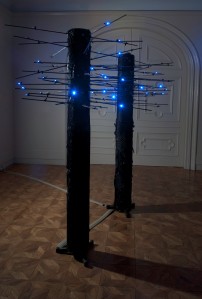 LD: Hi China Blue! That was a great visit we had – great food, amazing dinner conversation, and then a visit to your public art exhibit, Firefly Grove. You’ve written that this piece addresses public concern about the loss of fireflies, but there are so many threatened and endangered species. As a conservation biologist with an interest in the process of setting conservation priorities I wonder – why have fireflies in particular been a focus of your efforts?
LD: Hi China Blue! That was a great visit we had – great food, amazing dinner conversation, and then a visit to your public art exhibit, Firefly Grove. You’ve written that this piece addresses public concern about the loss of fireflies, but there are so many threatened and endangered species. As a conservation biologist with an interest in the process of setting conservation priorities I wonder – why have fireflies in particular been a focus of your efforts?
CB: Fireflies have captivated me when I first discovered them on a visit to Italy, many years ago. I did not know they existed until then because their range sadly does not include California, where I come from. About five years ago I was experimenting with electronics, you would not think of electronics and fireflies together but one of the first exercises is to turn on and off an LED. As a sculptor I thought that was very dull and the idea of an LED turning on and off inspired the thought of making an electronic firefly. That lead to a series expanded from one to the field that you saw.
There are many interesting things about fireflies. In addition to providing us with nostalgic memories of childhood experiences collecting them, they are also bioindicators of a loss of habitat and diversity. Additionally they produce chemicals that create their nighttime illumination. One these chemicals is Luciferin. This is a chemical that is now used as a research tool to track cancer cells in the body and illuminate neuronal pathways in the brain.
LD: I grew up with fireflies in my backyard, and I miss them. So, I’m glad they’re a focus of your work! And why were you experimenting with electronics?
CB: My experimentation with electronics evolved out of my development of sound art works. When that began about 20 years ago, I wanted the work to be small, self-contained and without the usage of a computer or large speaker and amplifier systems which were the mode at the time. So, I taught myself how to burn sound files onto EPROM chips to loop the files. I then created small speaker systems for the work I built so I could camouflage the hardware. Finally, I attached movement sensors that would turn the audio on when people walking by. Operating in this way enabled me to create work that could then be played self-sustained in galleries over a sustained periods of time.
As time went by I realized that learning how to build circuits would be helpful to me in developing new work so that is how I ended up experimenting with electronics.
LD: So, did your work with electronics change the way you thought about the biology? Or did the biology affect the way you understood or approached your art?
CB: It was a bit of both. I did not have a strong education in science because my degrees are in art, so considering science as a topic for my work has been a slow but organic process. Through my work making the Firefly 2.0 etc., I developed an interest in biomimicry and how it can effect and influence technological changes in our world. It’s influences are wide ranging from impacting the creation of robotic gate to velcro tape (inspired by burrs) to self healing materials. And by studying fireflies and bioluminescence I was inspired to approach my work from a vantage point that I never thought of before and one that I find has both meaning while illuminating the human condition and our impact on nature.
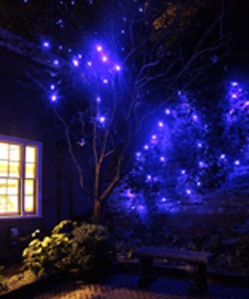 LD: China Blue, this sounds like cutting edge work from lots of interesting angles. I could imagine that it might appeal to undergrads looking for an internship or work-study. Do you ever take on assistants, and if so, what type of work do/would you have them do?
LD: China Blue, this sounds like cutting edge work from lots of interesting angles. I could imagine that it might appeal to undergrads looking for an internship or work-study. Do you ever take on assistants, and if so, what type of work do/would you have them do?
CB: Yes, I often work with interns and assistants. The work I assign is based on a their strengths. One assistant I am currently working with is designing new software for various projects I am working on. His strengths are in knowing a variety of computer languages (MAX/MSP, Ableton Live, Open GL and Java script) and a familiarity with Arduinos and physical computing. Another assistant I had was helpful with running the magazine for my non-profit, The Engine Institute (http://theengineinstitute.org) which requires an interest in art journalism and knowledge of WordPress, MS Word, photoshop and some d-base work. I have also worked with sculptors using new technologies and people familiar with 3d printing.
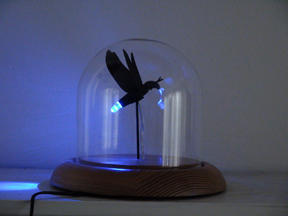 Readers, I hope you enjoyed this little interview, and that it may inspire you to combine art and science in your work. In the process I learned that her work includes not only Animal Behavior, Conservation Biology, electronics, sound engineering, and robots, sculpture and sound art, but also dance! Check out these videos to see and hear her work with Lance Massey and the Providence Ballet Theater (http://www.providenceballet.org/providenceballettheatre.htm ): http://theengineinstitute.org/events. And maybe you can send China Blue some great candidates for an internship!
Readers, I hope you enjoyed this little interview, and that it may inspire you to combine art and science in your work. In the process I learned that her work includes not only Animal Behavior, Conservation Biology, electronics, sound engineering, and robots, sculpture and sound art, but also dance! Check out these videos to see and hear her work with Lance Massey and the Providence Ballet Theater (http://www.providenceballet.org/providenceballettheatre.htm ): http://theengineinstitute.org/events. And maybe you can send China Blue some great candidates for an internship!

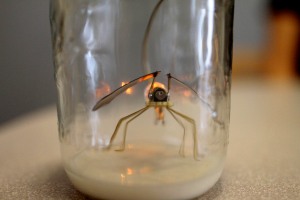
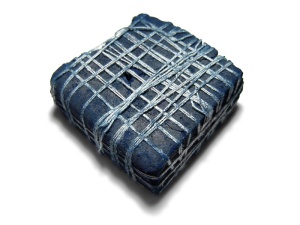



You must be logged in to post a comment.